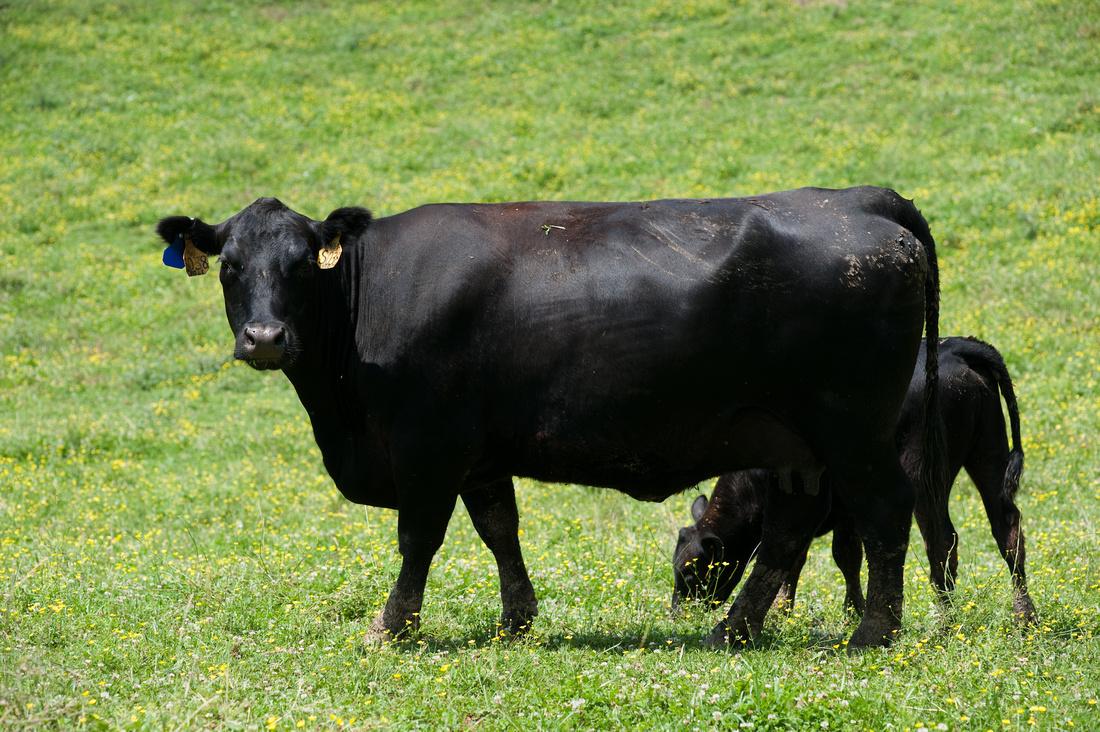The overall goal for a seasonal cow-calf operation should be to have cows calve roughly every 365 days (or once per year). Some management tools, such as estrus synchronization programs, can be used to complement good nutrition and herd health management to enhance reproductive success.
What is estrus synchronization?
In its simplest definition, estrus synchronization is the coordination of the reproductive cycle in cattle. This coordination is achieved through strategically-timed delivery of one (or a combination) of several reproductive hormones, with the most common being progesterone, prostaglandin, and gonadotropin-releasing hormone (GnRH).
What are the advantages of an estrus synchronization program?
Most beef producers who make use of estrus synchronization do so in order to have all cows ovulate around the same time. The advantage of this is three-fold: 1) it can make breeding logistically easier, especially if using artificial insemination; 2) it allows for a more uniform calving season in the following year; and 3) it promotes calving earlier in the calving season.
Using synchronization protocols improves breeding season logistics and simplicity because it allows producers to plan ahead since they know when to expect cows to come into heat (estrus). This is particularly useful for those who use or who are considering use of artificial insemination (A.I.). Synchronization protocols can save producers who inseminate their cattle a substantial amount of time and stress during breeding season because they reduce (or, for some protocols, eliminate) the time required to observe cattle for signs of heat and allows for all cows to be inseminated within a similar time-frame. It also allows for more efficient and cost-effective planning if insemination services provided by a technician or veterinarian, which also makes adoption of A.I. more feasible for many producers.
Implementing estrus synchronization can also promote a narrower calving season by coordinating conception during breeding season. Animals that conceive around the same time should calve around the same time during calving season. A narrow calving season is desirable because it results in more uniform groups of animals, which allows for more focused, fine-tuned management throughout the year. It also results in a more uniform calf-crop at sale.
Synchronization protocols can also help promote conception earlier in the breeding season. Cows that conceive earlier in the breeding season will calve earlier in the subsequent calving season. Not only does this result in calves that are older and larger at weaning, but it also allows these cows to have a longer postpartum recovery period before the start of the next breeding season. Ideally, at least 60% of cows should calve within the first 21 days of the calving season and 87% should calve within the first 42 days.
What protocol should I choose?
There are many different estrus synchronization protocols available, and the timing and types of injections required in each protocol vary. These protocols have been researched extensively to promote optimal reproductive success and ensure safety.
When selecting a protocol, producers must balance cost and the number of times animals must be worked with conception benefits. Most producers start out by using protocols that require the fewest number of animal handling events and make adjustments if the desired level of success is not achieved.
What are the drawbacks of a synchronization program?
The increased labor associated with working cows a few extra times and upfront cost of hormone treatments are the biggest drawbacks of an estrus synchronization program. Depending on the protocol selected, animals will need to be worked through a suitable handling system anywhere from 1 to 4 times. Furthermore, synchronization protocols can cost anywhere from $20 to $40 per head. However, it is important to remember that it is an investment in the reproductive program and to consider possible long-term financial impacts.
Is an estrus synchronization program right for my farm?
Ultimately, the decision to implement a synchronization program is a personal one and should be made on an individual farm basis. It is important to keep in mind that what works well for one farm may not work for another. Producers contemplating the use of a synchronization program on their farm should start by asking themselves the following questions to help them gauge whether or not they are ready.
-
Do I have the appropriate handling and restraint facilities to ensure a safe, positive experience for cattle and people? A good handling facility is a critical component of a successful synchronization program. For animal and human safety, a synchronization program should not be considered if the answer to this question is “no”.
-
Are my cows in good body condition and otherwise healthy? While a synchronization program can help improve the reproductive program, it cannot replace good nutrition and health management. If cows are too thin at breeding, they will not respond well to a synchronization program.
-
Am I willing/able to keep good records and adhere to the protocol exactly as written? The success of synchronization protocols relies heavily on the timing of hormone treatment delivery. Thus, any deviation from the protocol can have severe negative impacts on its success.
-
What am I expecting to gain by implementing a synchronization program? It is important to keep the goals for the program realistic. It is not realistic to expect a synchronization program to yield an 80% first-service conception rate. However, it is realistic to expect a synchronization program reduce the length of the calving season by a couple weeks or increase the proportion of cows that calve during the first 21 days of the calving season.
